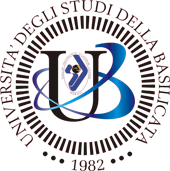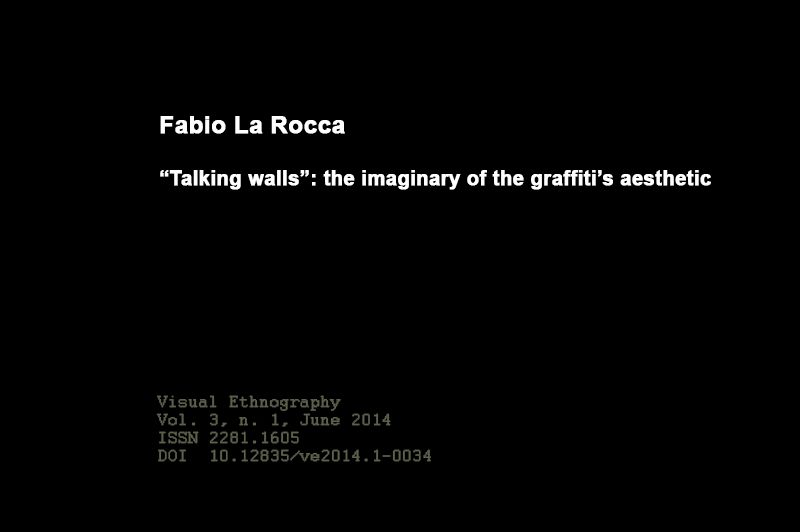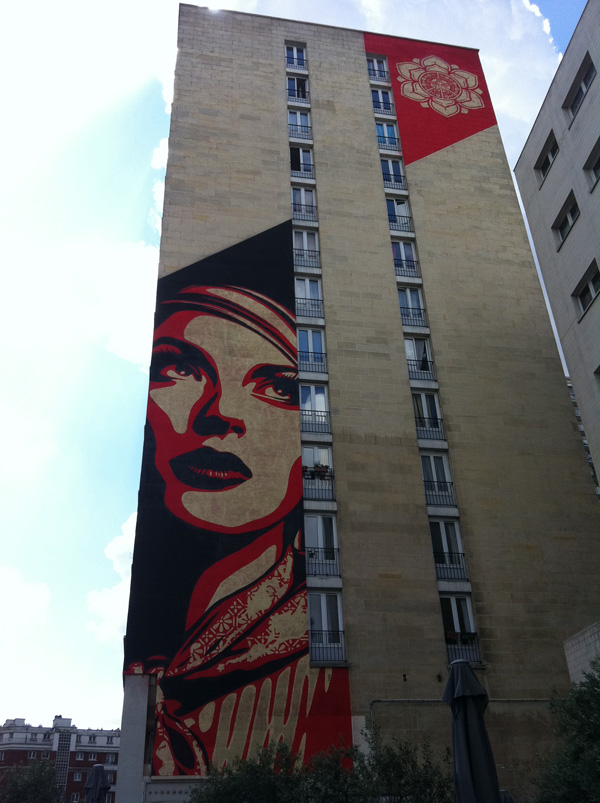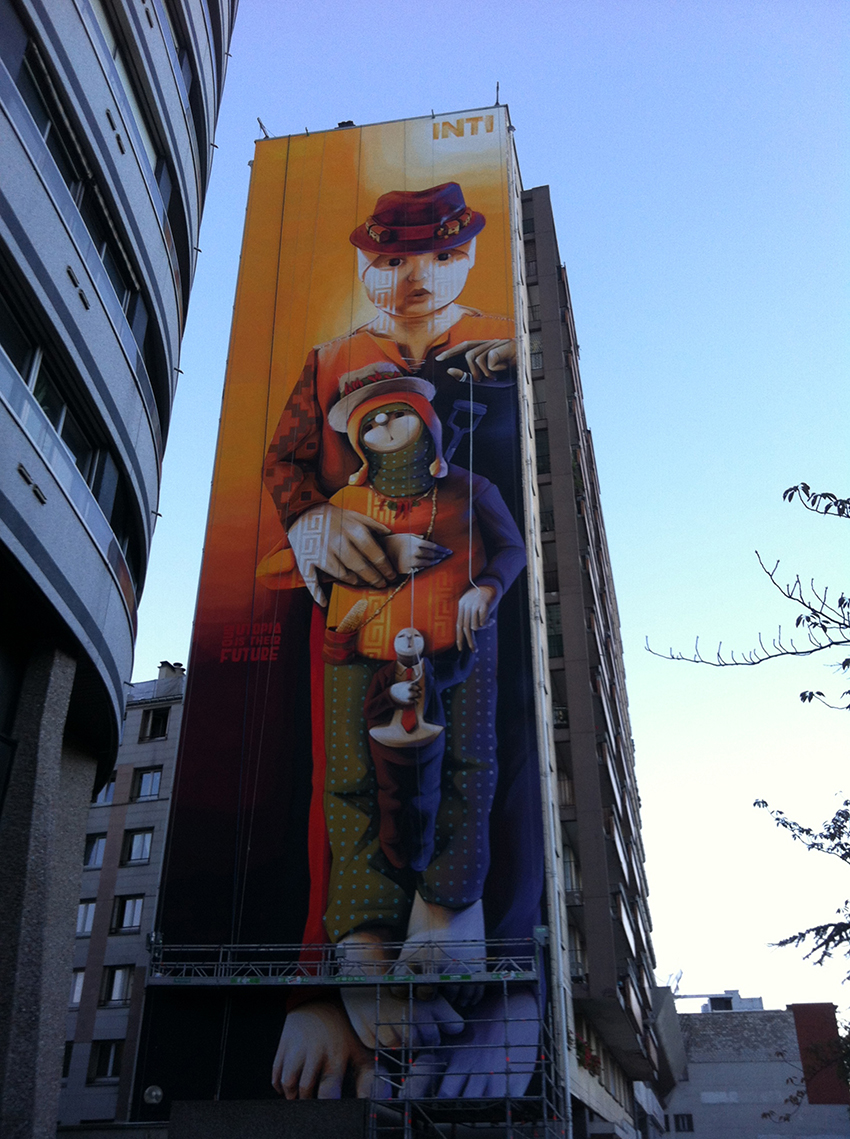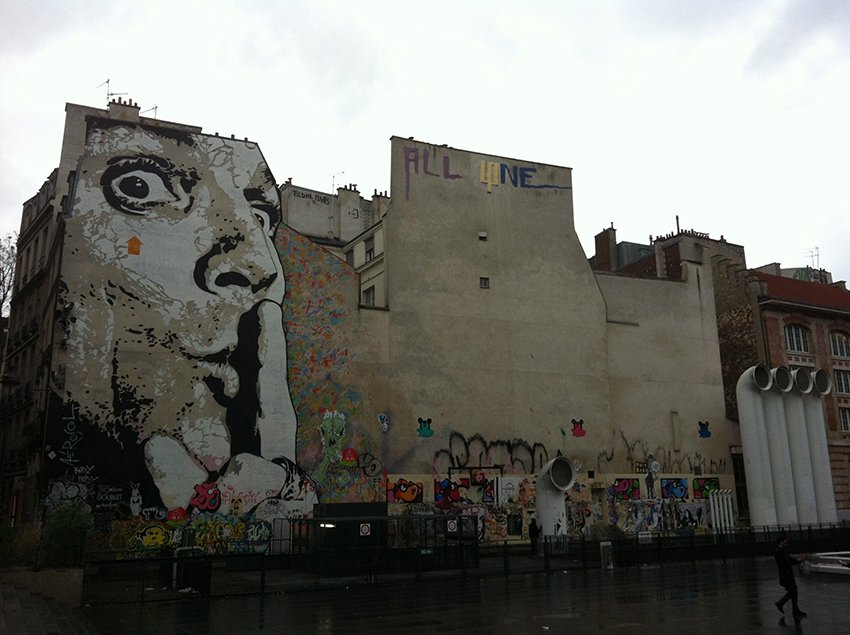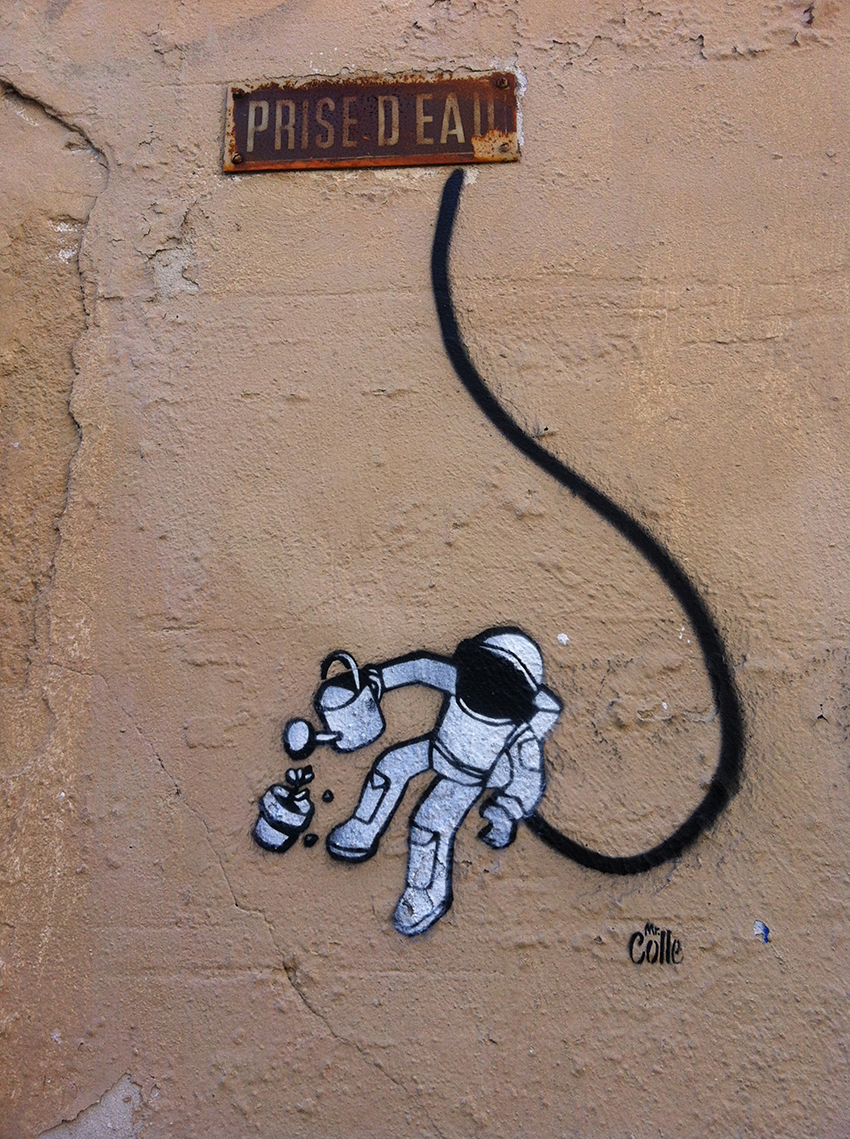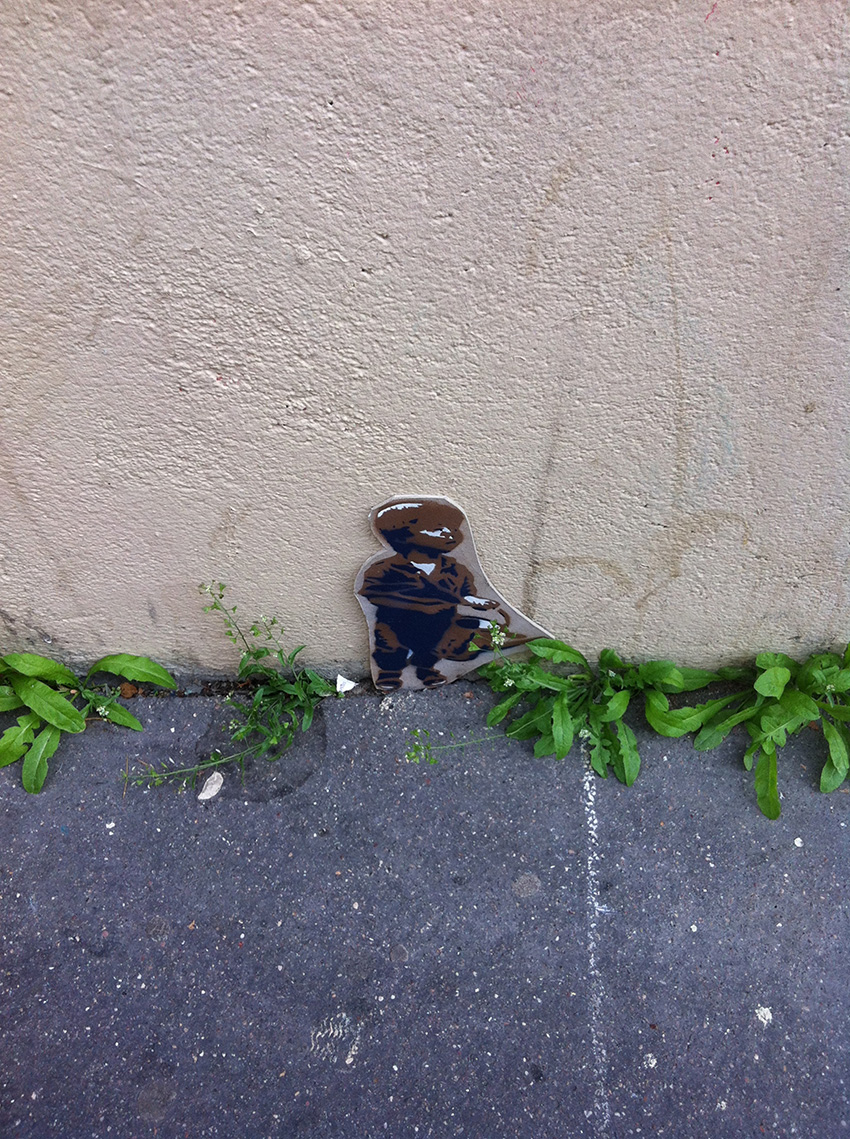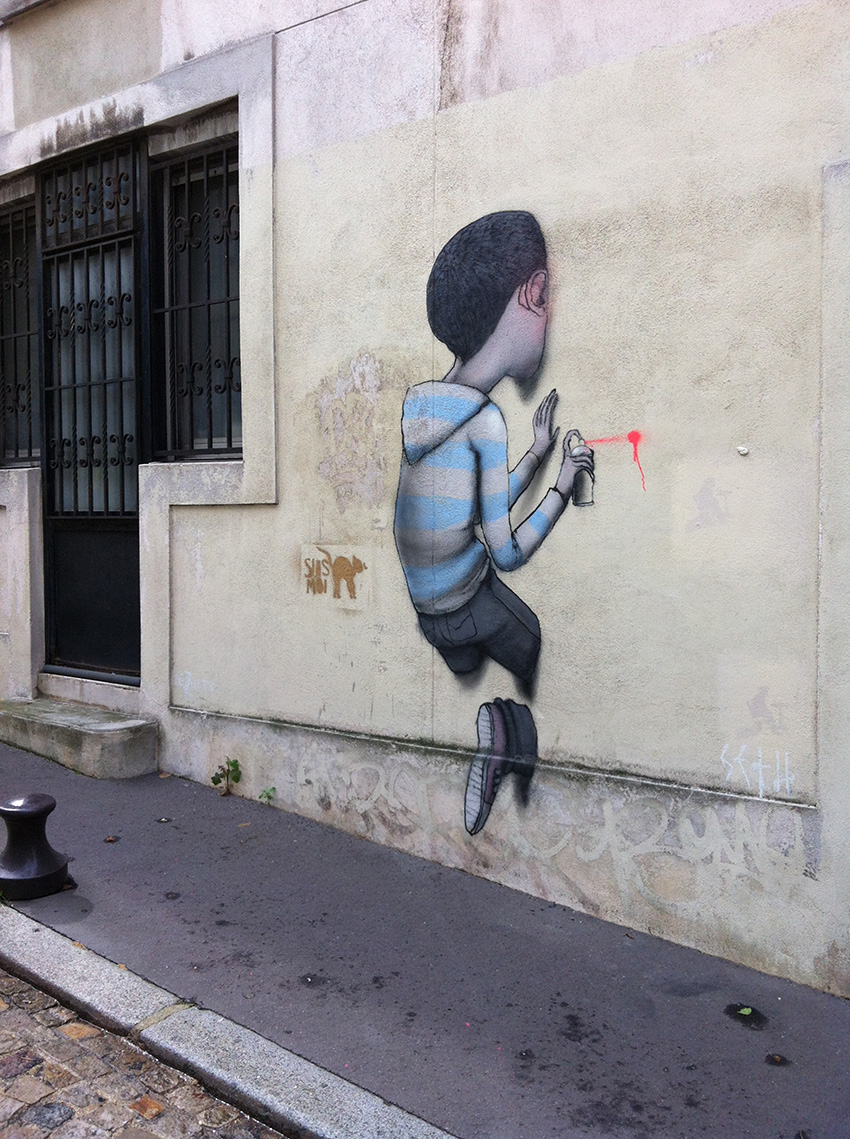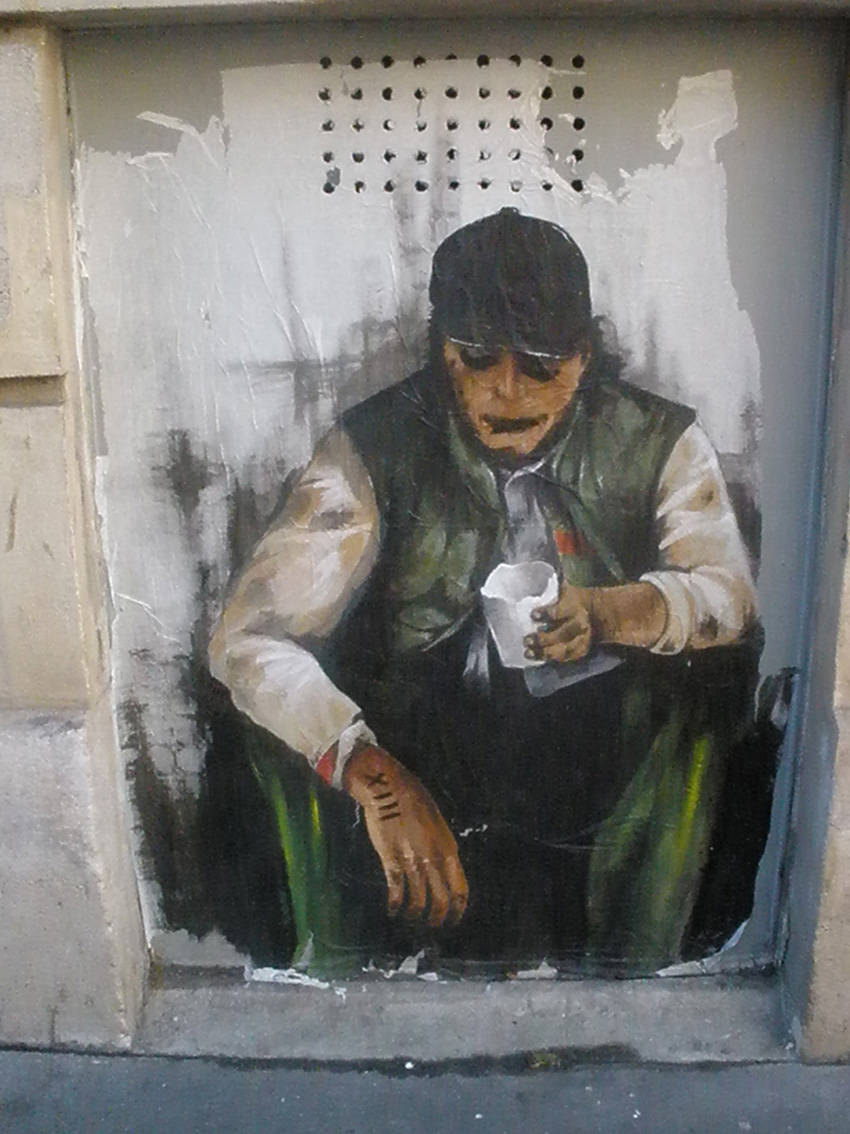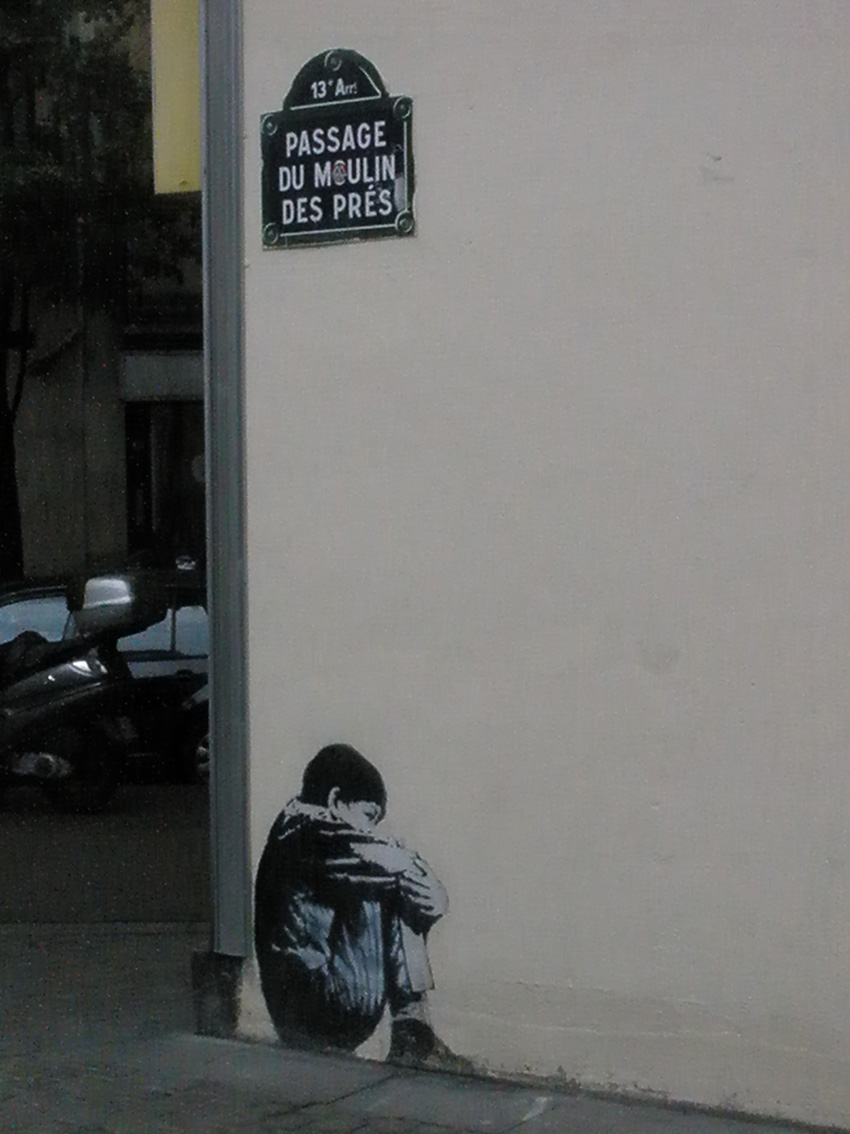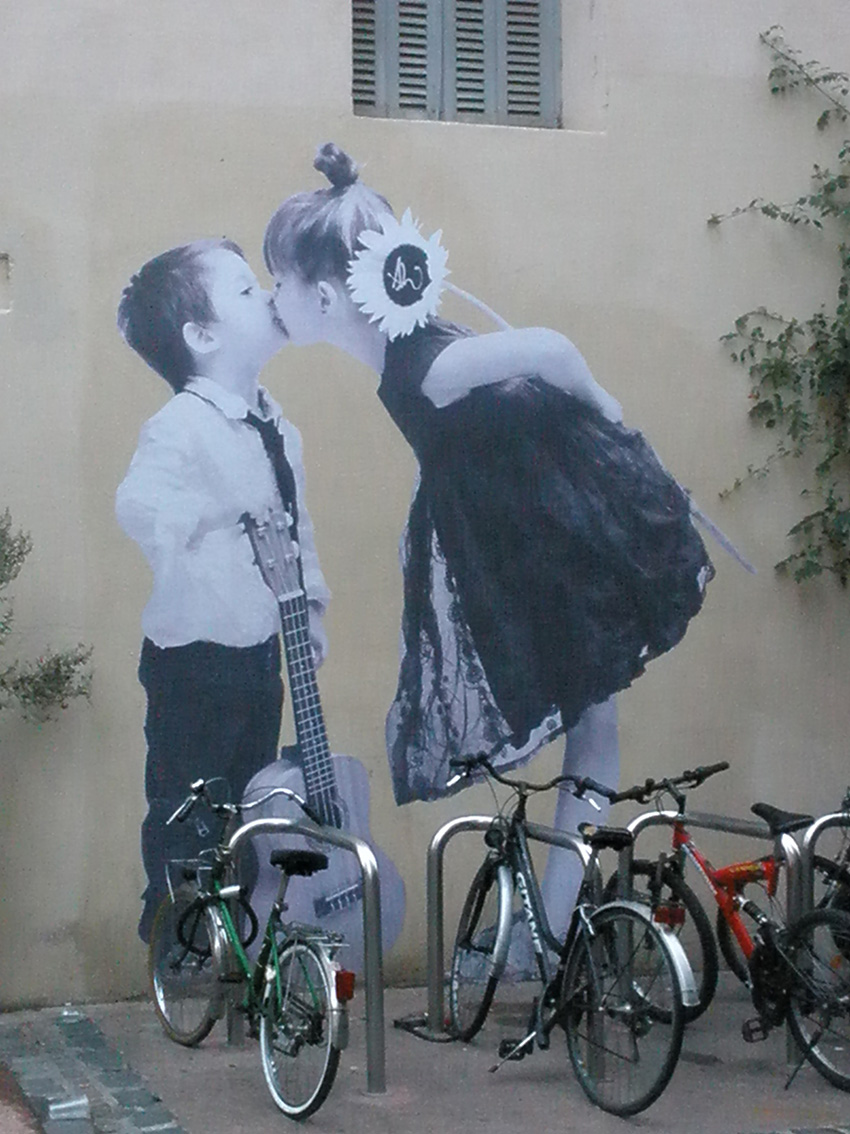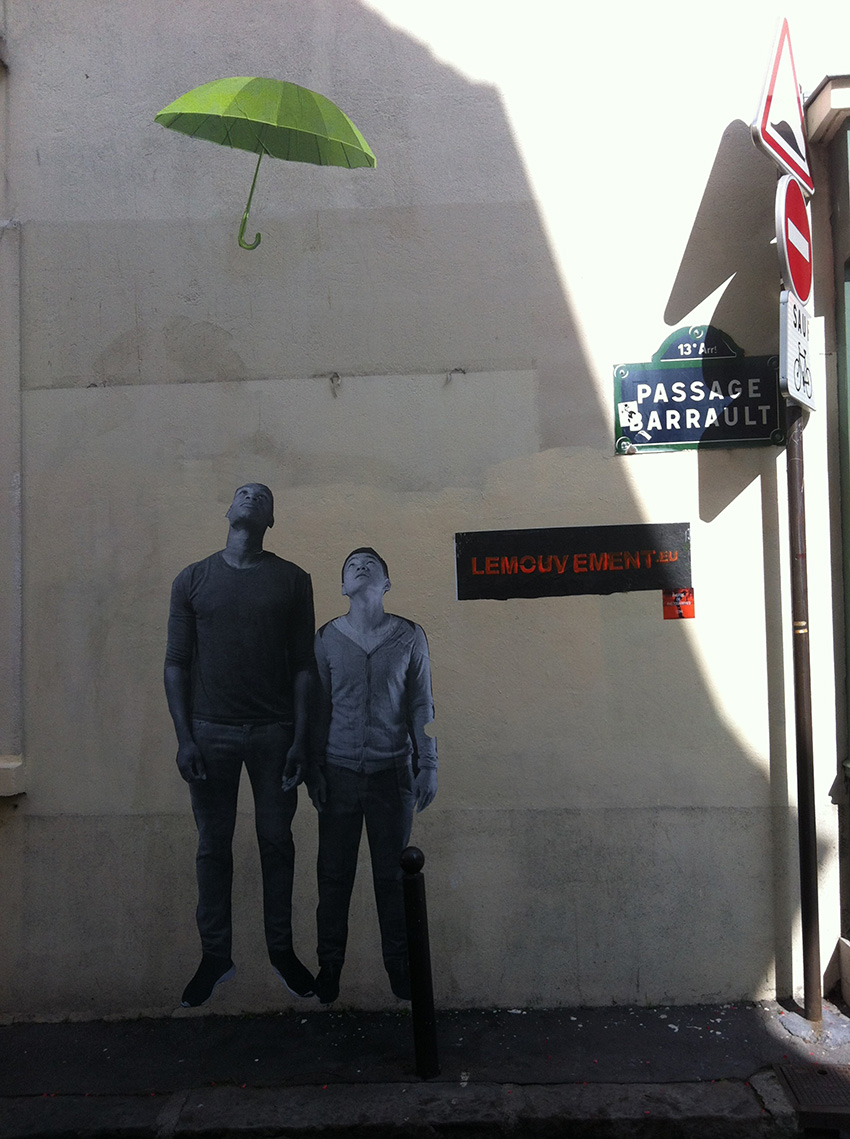-
Fabio La Rocca is a sociologist and Maître de conferences at University Paul Valéry Montpellier 3 where he is member of IRSA-CRI. He is also a researcher at Le Centre d’Études sur l’Actuel et le Quotidien (CeaQ) at the Sorbonne University where he founded and directs the Groupe de Recherche sur l’Image en Sociologie (GRIS). -
This project is a reflection on the representation of the wall through graffiti. My idea is to search, through a nomadic experience of the streetscape, for an alternative narrative of the kind of image that populates our polyphonic space. The goal is to consider graffiti and the wall as unique forms of identity, and as form of communication proper to the contemporary metropolis. In this project, in constant development, central interest and importance is given to the interrogation of our eye and its capacity to capture via the photographic medium - which we call a “third eye”- the realism of the streets, the essential fragments that activate a special intense regard, or a form of sociological curiosity. The photographic medium can be considered as a narrative of the daily life where the wall is like a screen projecting shadows, story, colours, and animations: a form of urban storytelling. We devote intention and attention to graffiti as an aesthetic form of the urban panorama, allowing us to perceive the landscape of the metropolitan body. The wall is a symbolic representation of this body and it is populated by an ever-proliferating series of images in various styles that structure the direction and influence our perception of the metropolis.
-
From a plurality of visual meaning, we chose graffiti as a form a dilatation of the porosity of a city’s architecture, toward constructing a symbolic codification of space to reflect the metropolis as a medium. The wall as a screen projecting graffiti is for us is a kind of landmark of the changing body of the metropolis through an emotional geography and new natural panorama. In this urban condition, graffiti has become a natural ornament of the wall, as a uniform that gives particularity to the ocular atmosphere of the street. So we can investigate this fragment by an immersion in urban space to build a particular “mosaic of images” of the visual representation of the city. Series are chosen, from many visual examples, to try to evoke reflection about how our eye is solicited by the particularity of images in the space and in how the wall can be perceived as a screen where the graffiti seems to be, today, the particular “character” that plays the role of narration of the urban dimension through its multiplicity of meanings and the construction of an aesthetic story. In this urban experience, we search for every sign that grabs our attention, from the Simmelian perspective of the Augenblick (blink of the eye), and in each moment our visual tool is ready to record the fragment as a way to construct a “visual notebook”. With this strategy we can think of the eyes and of photography as a possibility of knowledge, a way to present a trajectory of the urban dimension of the image. The result of this series of “narrative photography” focusing on the hybridism figure “wall + graffiti”, is a spatial adventure making possible a visual exploration, or even better, a visual psycho-geography. This is the result of immersion in the urban dimension, trying to capture some of the ambiances that symbolically characterise, from our point of view, everyday life in the metropolis.
-
1 - Obey Paris XIII
In this particular way, the face of the building is animated by a large graffiti that define a special connotation. By the intervention of graffiti, in these cases a popular house in the XIII arrondissement of Paris, the building transforms its connotation, our perception changes. -
3 - Silence: the wall talk!
In this patchwork of visual signs, the wall changes the physiognomy of the space and creates a particular texture on the wall that seems like desktop wallpaper. Thus, the wall as screen renders visible the iconic sign as a story with different characters as a sort of pigmentation of the surface.
-
6 - Penetration of the wall
In this visual representation we can see a penetration of the wall by the animated visual icon make possible a perception of an illusion to pierce the wall. A way to look at the graffiti as a rhythm of the space, an appropriation of the daily life making possible a new sentimental and sensible geography of the urban space.
-
7, 8, 9, 10 - Sentimental narration
This tableau of four images is an emblem of how the graffiti can modify the space and revivify some part of the urban space. This is a modality of a reconfiguration of the wall by a sentimental narration. In this case we can think the wall as an experimentation place, a screen of expression a mise en scène that attract our eye and transform the urban geography in a symmetric polyphony.
-
Brighenti Mubi, A. (2010) « At the Wall Graffiti Writers, Urban Territoriality, and the Public Domain», in Space and Culture, London : Sage.
Campos R. Brighenti Mubi A., Spinelli L. (dir.), (2011) Uma cidade de imagens. Produções e consumos visuais em meio urbano, Lisboa : Mundo Sociais.
La Rocca F. (2011) « A cidade visual. A presença das imagens no espaço urbano » in Imagens na cidade/Imagens da cidade, A. Mubi Brighenti, R. Campos, L. Spinelli (eds.), Lisboa : Mundo Sociais, pp. 51-66.
La Rocca F., (2013), La ville dans tous ses états, Paris : CNRS Éditions.
Leite J., La Rocca F. (2010) « Arte Urbana: expressao artisitca e tecnologia digital do cotidiana à cultura do lazer » in Revista Tematicas, Ed. Universidade Estadual de Campinas, ano 19, N°37/38.
Merleau-Ponty M. (1964) Phénoménologie de la perception, Paris : Gallimard.
Milon A., (1998) « Tags, graff, rap : autres formes de communication urbaine » in revue Urbanisme, mars-avril 1998, n°299.
Mons A., (2013) Les lieux du sensible, Paris : CNRS Éditions, 2013.
Naar J. (2007), The Birth of Graffiti, London : Prestel.
Rose, G., (2007) Visual Methodologies: An Introduction to the Interpretation of Visual Materials, 2nd edition, London: Sage.
Refbacks
- There are currently no refbacks.
ISSN Print 2499-9288
ISSN Online 2281-1605
Publisher Edizioni Museo Pasqualino
Patronage University of Basilicata, Italy
Web Salvo Leo
Periodico registrato presso il Tribunale di Palermo con numero di registrazione 1/2023

